U Pyinya Zawta
Friday, 02 January 2009 19:30
Mizzima News
Burmese monks are known to have played an important role in their nation's politics throughout its history. While they did not partake in mundane political processes, they traditionally held positions of moral authority, and dispensed wisdom and guidance to past kings, rulers and governments in Burma. On some occasions, emissaries from the monasteries were despatched on peace missions to avoid war with foreign powers.
Buddhist monks gave council to past monarchs, ranging from the first King Anawrahta of unified Burma in Bagan, to the last King Mindon and his son King Thibaw, guiding them on how to properly conduct themselves as responsible rulers. Burmese monks fulfilled their obligations toward their religion and the people in the past as royal advisers, and most importantly, as the guardians of sacred rights and responsibilities of all citizens.
Burmese monks continued to play an important role in national affairs even after Burma fell under British colonialism, in 1886. During the Colonial era, a monk leader U Ottama brought political enlightenment back to Burma and eventually helped lead the nation to independence from Britain. His lectures inspired generations of followers including Ko Aung San who later became the father of Burma's Independence. Another brave and defiant monk, U Wisara, died in prison after a 166-day hunger strike in 1929, but still helped reawaken political consciousness in Burma, and with his final words, to "never forget," urged the people to persevere until independence was obtained from Britain.
After the 1948 independence, numerous political and social organizations proliferated in Burma. During this period Burmese monks formed the All Burma Young Monks' Union (ABYMU) to continue championing the causes of their people.
But after the 1962 military coup, General Ne Win abolished all civil and political organizations in Burma, and the ABYMU was banned in 1964. Even though barred by the military, young Buddhist monks remained at the forefront of political movements from the 1974 U Thant crisis, to the 1975-1976 one hundred years' anniversary of labor unrests in Burma.
During the nationwide uprising in 1988 when one government faction after another failed to control the county, monks used their authority to prevent anarchy and chaos and provided sanctuary to the public. After the military took back power through another coup on September 18th, 1988, the All Burma Young Monks' Union was again established, as an Upper Burma branch in Mandalay and as a Lower Burma branch in Rangoon, and monks joined the people's protest against the return of the military dictatorship.
In 1990, the National League for Democracy (NLD) members, student activists, and ordinary citizens made alms donation to the monks marching peacefully on Zay-Cho and 26-B roads in Mandalay, marking the two year anniversary of the '88 uprising. When the army forcibly tried to stop the procession, unrest broke out and many monks were brutally beaten. Since the authorities prevented the monks from alms collection by egregiously violating Buddha's Dharma, two monk leaders, U Raza Dama Bewitha and U Kovida Bewitha of the Upper Burma Young Monks' Union called for a religious boycott dubbed 'Overturning of the Alms Bowl,' against the SLORC government, for the first time.
Led by monks from major monastic academic institutions, the Young Monks Union in Rangoon joined the boycott movement, as prescribed under Buddha's Dharma laws, and they affirmed their pledge with obeisance toward the Shwe Dagon Pagoda, on 3 October 1990, the Tha-din-kyut full moon day of Burmese year 1352, at the Ngar Htait Kyi Pagoda pavilion.
With prompting from U Ahnt Maung, a high ranking member of the government's religious affairs department, the military junta in panic arrested and sentenced to long prison terms senior monks from renowned monastic academies, members of the Rangoon Young Monks' Union, and monks from other Sangha academies. Tragically Ashin U Arsara from the Thayettaw monastery died in Thayet prison and Ashin U Zaw Tika from the Shwebon Pyint monastery died in Insein prison, both from torture and inhumane conditions. The fates of many other monks taken away by the government during the 1990 boycott protest remain unknown.
Finally, after almost two decades since many monks were arrested and imprisoned, the monks' resistance against military oppression in Burma seemed to have all but evaporated. But the Saffron Uprising in 2007 proved that the monks' resolve to defend the future of Burmese Buddhism and their people was growing only stronger, not weaker.
Before the leading monks' organization the 'All Burma Monks Alliance' was founded during the Saffron Revolution, many smaller monks' coalitions had already been established. As the first step, the All Burma Young Monks Union organized a central working committee with five leading monks from Rangoon and one from Mandalay, selected from many monks' organizations. At the same time various smaller local monks' organizations were being created, in Pegu, Pye, Magwe, Moulmein, and Arkan areas. The famous leading monk, Ashin U Gambira, who was arrested last year, and six other monks led the formation of the Rangoon Young Monks' Union to represent monks from the Rangoon area.
Monks from upper Burma in Mandalay formed the Federation of All Burma Monks' Union and helped organize monks' reading groups, libraries, and literary discussion groups, among other activities. Young Monks' Unions, like Students' Unions, were being formed all over Burma with the sole intention of ending the military dictatorship in Burma. During the mean time, Young Monks' Union members helped other monks' organizations to coordinate, consult and exchange ideas by helping them communicate with each other. When the regime became suspicious at times, new monks and civilians were used as dispatchers. And on occasion, meetings were cancelled in order to evade the junta's relentless assaults.
Since 2005, there was a growing realization that a mass movement to overthrow the Burmese dictatorship was becoming inevitable, and many activist groups began expanding their underground movements in anticipation.
When the military junta suddenly increased the price of fuel on August 15, 2007, impoverished people in Burma faced an unprecedented level of hardship. When small demonstrations broke out against the severe economic conditions, government thugs' organizations named, Swan Ahh-shin, Union Solidarity and Development Association (USDA), and riot police were sent in to violently suppress the peaceful protests, and swiftly ended the public outcry.
In order to come to the rescue of frightened and battered citizens suffering under severe economic hardships, the monks took it upon themselves to unite all of the monks' unions and to create a larger monks' alliance at a meeting scheduled for September 9, 2007 at a monastery in Mandalay. By September 4 many monks had left their monasteries and were on the way to the meeting.
But on September 5 when the Pakokku monks came out to chant the peaceful prayers of the 'Metta Sutta,' - the sutra of loving kindness to radiate the spirit of love to all beings - in sympathy with the suffering public, the local government militia brutally attacked the monks and tied them to electric poles, beat them with rifle butts, and arrested them. News of these actions spread quickly, and the next day unrest broke out and cars were burnt in Pakokku.
Burmese monks from all over the country felt compelled to respond to such shocking violence against revered Buddhist monks who were marching peacefully. When the monks gathered on September 9 as previously agreed, the meeting was forced to move to a new location for fear of detection by the authorities. Finally, monks at the meeting unanimously decided to boycott the military if the government failed to comply with the following demands by a given deadline.
The monks demanded that the State Peace and Development Council (SPDC)
1. Apologize to the Pakokku monks, by midnight of September 17
2. Reduce the prices of fuel oil and basic commodities
3. Unconditionally release Aung San Suu Kyi and all other political prisoners
4. Hold dialogue with the democratic political opposition representatives in order to begin a national reconciliation process
The ensuing united monks' organization was named the 'All Burma Monks' Alliance' (ABMA) and the monks decided to proceed with boycotting the military on September 18, 2007 after the regime failed to meet the demands before the deadline.
Members of All Burma Monks' Alliance
1. All Burma Young Monks' Union
2. Federation of All Burma Monks' Union
3. Rangoon Young Monks' Union
4. Sangha Duta Council of Burma
The executive founding members of ABMA
1. U Pakada (Pannasara )
2. U Medhavi
3. U Kheminda
4. U Aww Ba Tha
5. U Tay Za
6. U Gambira
The announcement of the above formation of the ABMA was handwritten, photographed, and published via email media sent from a handheld camera, since computer communications were disrupted or unavailable.
During the Saffron uprising, generous provisions of food and essential services were donated to the monks by a caring public. There were exemplary unforgettable individuals like one outstanding patron who took diligent care of the monks.
On September 18, 2007 the ABMA effectively began the boycott against the SPDC regime, and the event became known as "the Saffron Revolution." The United Nations and the rest of the world were forced to acknowledge the Burmese people's struggle for freedom from brutal military dictatorship.
Much of the credit for the Saffron Revolution was since given to famous organizations or people, but the real contribution to the Saffron Revolution was made by the monks and people who genuinely shared the grievances of ordinary citizens, and who took unified and daring actions inside Burma.
Many Burmese people were aware of the 2007 Saffron Revolution and people from all over the world had also taken notice and became more interested in Burma, since 'The Golden Uprising' - as it was known in Burmese - eventually brought the UN Secretary General's special envoy, Mr. Ibrahim Gambari, to Burma.
But the Saffron Revolution did not simply emerge without effort. The Saffron Revolution was born of the leadership of the All Burma Monks' Alliance - ABMA - the joint organization of four original monks' unions and the extraordinary courage of the member monks, and their ability to unite for the sake their people. The uprising took place precisely because of the determined leadership of the All Burma Monks' Alliance (ABMA).
The All Burma Monks' Alliance (ABMA) was founded on 9 September 2007. Numerically it lines up as 9-9-9, when 2 and 7 from the year 2007 are added and also when all numbers 9+9+2+7=27 are added, including the sum of 27; 2+7=9.
After the thugs hired by the junta government attacked a group of monks marching peacefully in Pakokku, on 5 September 2007, the ABMA made four demands to the Burmese military government, with 17 September 2007 as a deadline to respond. The ABMA announced via local media that if the military failed to accede to its demands, the monks would carry out a boycott against the government officials beginning on 18 September 2007. Numerically digits of the date 09 18 2007 also add up to numeral 9.
September 18, 2007 was the 19th anniversary of the military coup and therefore an important date for Burma's generals. It also became a symbolically significant day for the Burmese monks, as the severe moral rebuke by the monks against the army junta, called 'overturning of the alms bowls,' was to begin on that same day. As early as 5:00 AM on 18 September, reporters began calling the ABMA leaders about the monks' boycott against the military. The reporters continued calling every hour on that day, asking whether the monks' boycott -- of refusing alms from military families, effectively denying them important religious merit -- would still be taking place. Early on, while events were still unfolding, it was very difficult to predict the day ahead. But, at that moment it became evident that the honor and esteem of Burmese monks and their religion was terribly at stake. As the gravity of the risk we had taken became clearer, we anxiously continued reassuring the public that conditions were good and that monks were proceeding with a boycott against the Burmese military. Still, we were not able to give a real encouraging answer, yet. Till noon of that day we were not quite sure of the outcome of the decision we had made while we responded to the inquiries about the monks' boycott.
The dramatic event of the 18 September 2007 Saffron Revolution was similar to the '8-8-88' uprising in Burma. Even as news media were reporting the rising momentum for countrywide mass protests in 1988, no one dared predict the inevitability of 8-8-88 uprising with confidence. Even at 7:00 and 8:00 a.m. there was still no certainty that the uprising was to take place. Only at 9: a.m. on 8 August 1988, when marchers from labour and student movements joined and advanced together along the promenade could we let out a sigh of relief.
In spite of heavy army roadblocks, the Burmese monks had also successfully staged a protest against the SLORC military government for the first time on 3 October 1990, the full moon day of the lunar month Thadingyut, (the end of Buddhist Lent), Burmese year 1352, at Rangoon's Ngar Htait Kyi Pagoda.
The most anxious moment on 18 September 2007 was at noon after our daily meal, as we watched the day's events with anticipation and saw nothing unusual. But after that moment many monks began gathering at Thingan-Kyun, Kyaikasan, and Shwedagon pagodas.
The authorities moved to close down the monks' quarters at Kyaikasan Pagoda, and monks from the Thingan-Kyun monastery began arriving at the Kyauk-sar-daw historic pagoda of the Magin monastery. The government and its violent militia organizations, the USDA (Union Solidarity and Development Association) and Swan Ah Shin (SAS-force of violence) were sent into pandemonium. Meanwhile, the monks began to arrive and seated themselves with great dignity and grace on the ground of the Kyauksardaw Pagoda. And then there was only utter silence.
Until suddenly, when sounds came from the distance, we only listened, listened for the sounds. It was 1:30 PM on 18 September 2007, and the resounding murmurs of the monks' Metta Sutta prayers could now be heard from afar. The monks were praying and chanting to emphasize their rebukes against the military for violating Buddha's teaching.
Soon after, the phones began to ring constantly, and the news of monks chanting the Metta Sutta and marching to the Shwedagon Pagoda in Rangoon and to other pagodas and monasteries in Taunggote, Pakokku, and Kyaukpadaung began to reach us.
Then phone calls from news media started to come in. And it was recorded that the All Burma Monks' Alliance had survived this great day. Followed by more dramatic days….
May freedom come to the people of Burma soon…
The writer is the founding member and Foreign Executive Director of the All Burma Monks' Alliance





















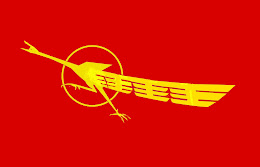





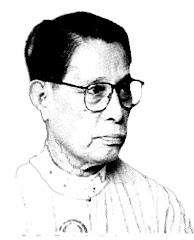


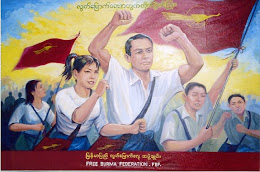





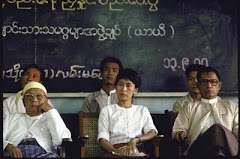

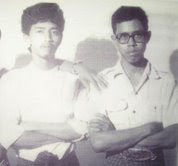

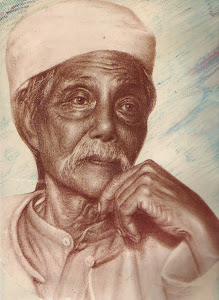
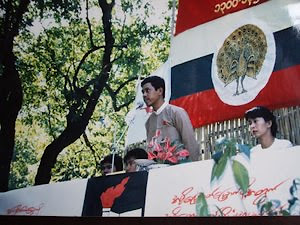
No comments :
Post a Comment